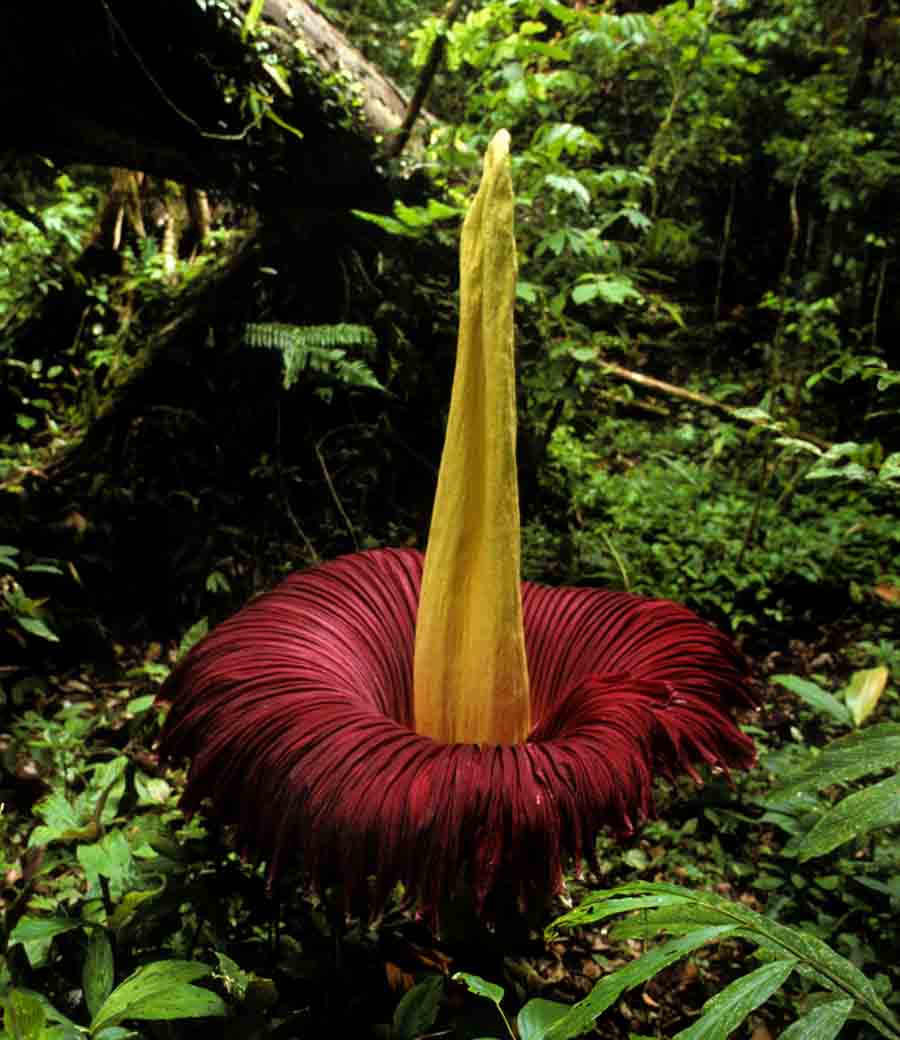Continuing our series on the region’s rarest weird and wonderful species, a tribute to the conservation work of British author Douglas Adams, meet one of the only plants ever to make Sir David Attenborough blush.
Freudian flower: Amorphophallus titanum
“In the 1880s, when the Italian Count Eduardo Beccari sent Kew Garden’s renowned botanist Joseph Hooker a description of a huge aroid flower he had discovered in Sumatra, no one believed him,” says wildlife photographer Jeremy Holden, of Fauna and Flora International. “The plant he described seemed too fantastic to be true. A century and a half later, it’s still astounding people, at least those lucky enough to have seen one. Like many obscure tropical plants, until recently it had only a Latin name: Amorphophallus titanum, which translates into ‘titanic misshapen penis’. Sir David Attenborough felt nervous about using the name too often when he filmed the flower for The Private Life Of Plants and in the name of propriety he christened it ‘Titan Arum’.
“It’s also known as ‘corpse flower’ and as such was the mascot flower of the Bronx in New York until once again it was deemed unseemly and ditched in favour of something more in line with the Bronx’s revitalised image. Notwithstanding human sensibilities, Amorphophallus is still an offensive thing, despite its preternatural beauty. Standing next to one in the forest is a strange experience: the plant seems unreal. Standing at up to three metres tall on occasion and a dark mysterious red, it appears as if it had fallen off a carnival float into the darkest depths of the rain forest. The observer will also be aware of the nauseating stench the flower emits in its attempt to attract flies and carrion beetles to pollinate itself. Descriptions of this smell vary, but ‘dead fish’ and ‘ammonia’ are often cited.
“How to see and experience a flowering Amorphophallus? In the wild this is not easy. It’s endemic to Sumatra and flowers once about every ten years. The flower is open for only a single day. Thankfully, because its natural habitat is now seriously threatened by forest clearance, Amorphophallus has become a big draw in botanical gardens around the world and it features in many collections. Kew and Berlin botanical gardens have flowers appearing every few years that attract thousands of visitors eager to see what all the fuss is about. If you ever get the chance, don’t miss this one.”
